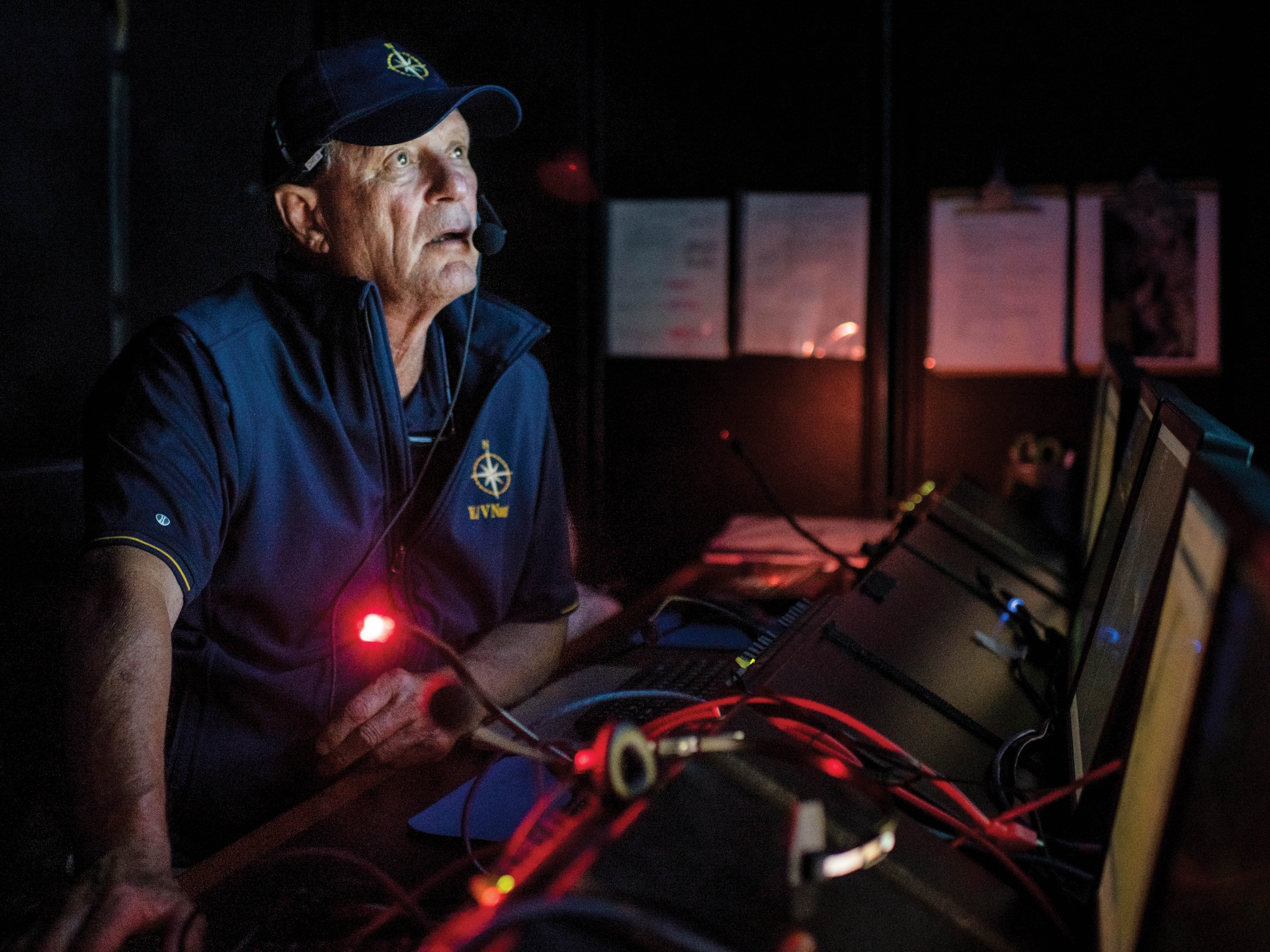About a decade ago, when Ved Chirayath learned that more than 90 percent of the planet’s seafloor remained unexplored, he was stunned. It was a stark contrast to the detailed maps of Mars and the moon he’d seen as an engineering graduate student developing devices to observe celestial bodies. Chirayath decided to apply techniques from space exploration to begin imaging the ocean. Baseline maps are vital, he says, because if we don’t know what’s there, we won’t know how to protect it.



There were big challenges: Sonar, commonly used to gather data from large swaths of the ocean, can’t provide high resolution, while satellite images can’t penetrate ocean depths and are distorted by waves. So the University of Miami professor and National Geographic Explorer created FluidCam, equipped with a specialized digital camera and software to “see” through water, and MiDAR, which adds high-intensity light.
These tools, often carried by a drone, are helping his team map sea features to the centimeter in places such as Guam. Since 2020, citizen scientists have lent a hand by playing the NeMO-Net video game to spot coral reefs in a virtual ocean made from the images. The data will be used to train supercomputers that will one day map reefs around the globe.
This story appears in the February 2023 issue of National Geographic magazine.
You May Also Like
Go Further
Animals
- What would the world look like without mosquitoes?What would the world look like without mosquitoes?
- Social media loves to villainize dolphins. Here's why it's wrong.Social media loves to villainize dolphins. Here's why it's wrong.
- How did wolves evolve into dogs? New fossils provide cluesHow did wolves evolve into dogs? New fossils provide clues
- This unorthodox method is saving baby parrots from extinctionThis unorthodox method is saving baby parrots from extinction
- A deadly disease that affects cats big and small found in U.S.A deadly disease that affects cats big and small found in U.S.
Environment
- ‘Corn sweat’—and other weird weather phenomena—explained‘Corn sweat’—and other weird weather phenomena—explained
- A sea tornado sank a yacht. We might see them more often.A sea tornado sank a yacht. We might see them more often.
- How billions of dollars are revolutionizing ocean explorationHow billions of dollars are revolutionizing ocean exploration
- Where to go stargazing in Chile according to a local astronomer
- Paid Content
Where to go stargazing in Chile according to a local astronomer
History & Culture
- Did Babe Ruth really ‘call’ this legendary home run?Did Babe Ruth really ‘call’ this legendary home run?
- The real history behind the legend of China's Monkey KingThe real history behind the legend of China's Monkey King
- How new technology transformed the American workforceHow new technology transformed the American workforce
- This secret Civil War sabotage mission was doomed from the startThis secret Civil War sabotage mission was doomed from the start
- This rare burial site reveals secrets about the Sahara's lush pastThis rare burial site reveals secrets about the Sahara's lush past
Science
- Why some say tennis is 'the world's healthiest sport'Why some say tennis is 'the world's healthiest sport'
- Your body ages rapidly at 44 and 60. Here's how to prepare.Your body ages rapidly at 44 and 60. Here's how to prepare.
- How do gold nuggets form? Earthquakes may be the keyHow do gold nuggets form? Earthquakes may be the key
- Astronauts getting stuck in space is more common than you thinkAstronauts getting stuck in space is more common than you think
Travel
- These are the must-see sights of Italy's Veneto regionThese are the must-see sights of Italy's Veneto region
- A guide to St John's, Atlantic Canada's iceberg capitalA guide to St John's, Atlantic Canada's iceberg capital





